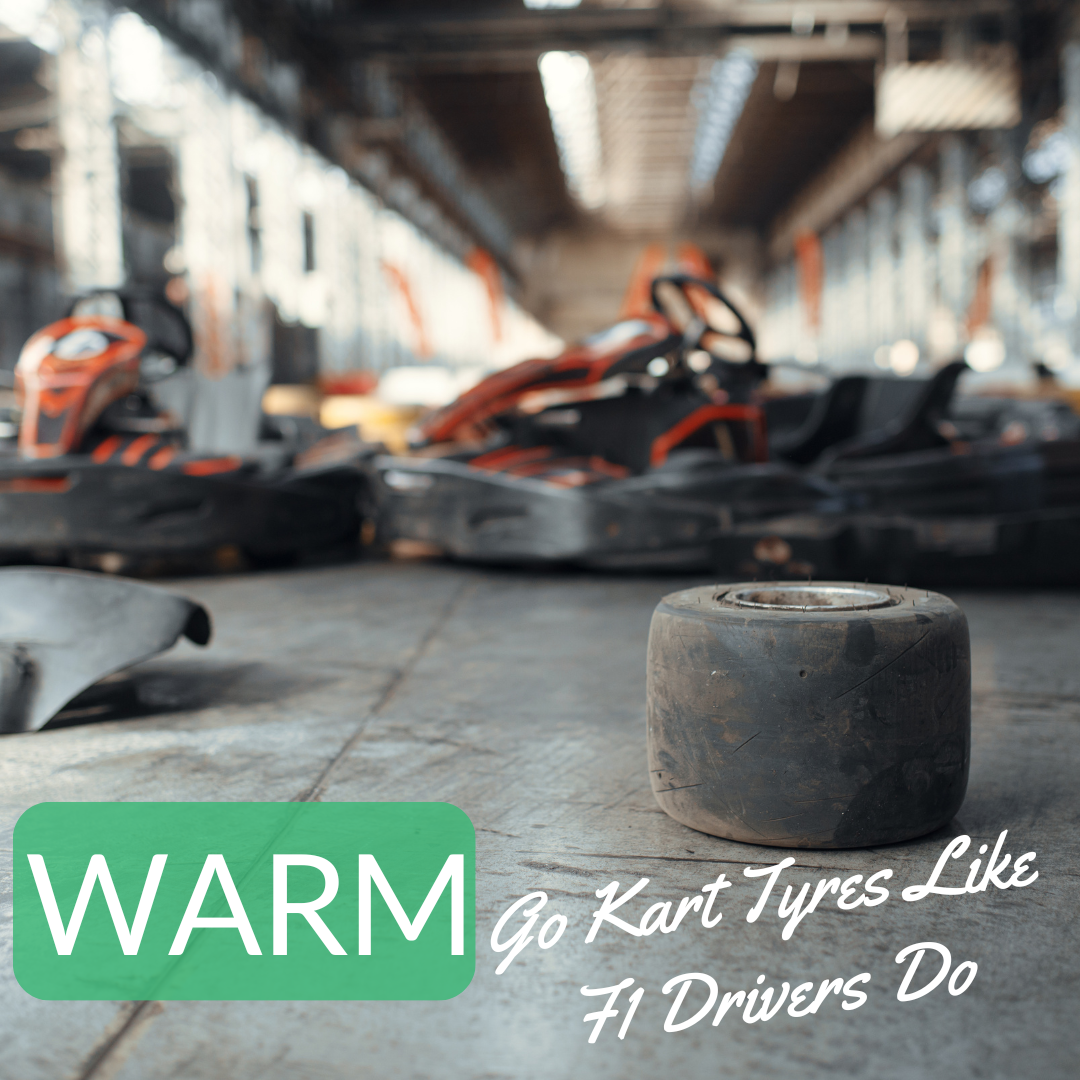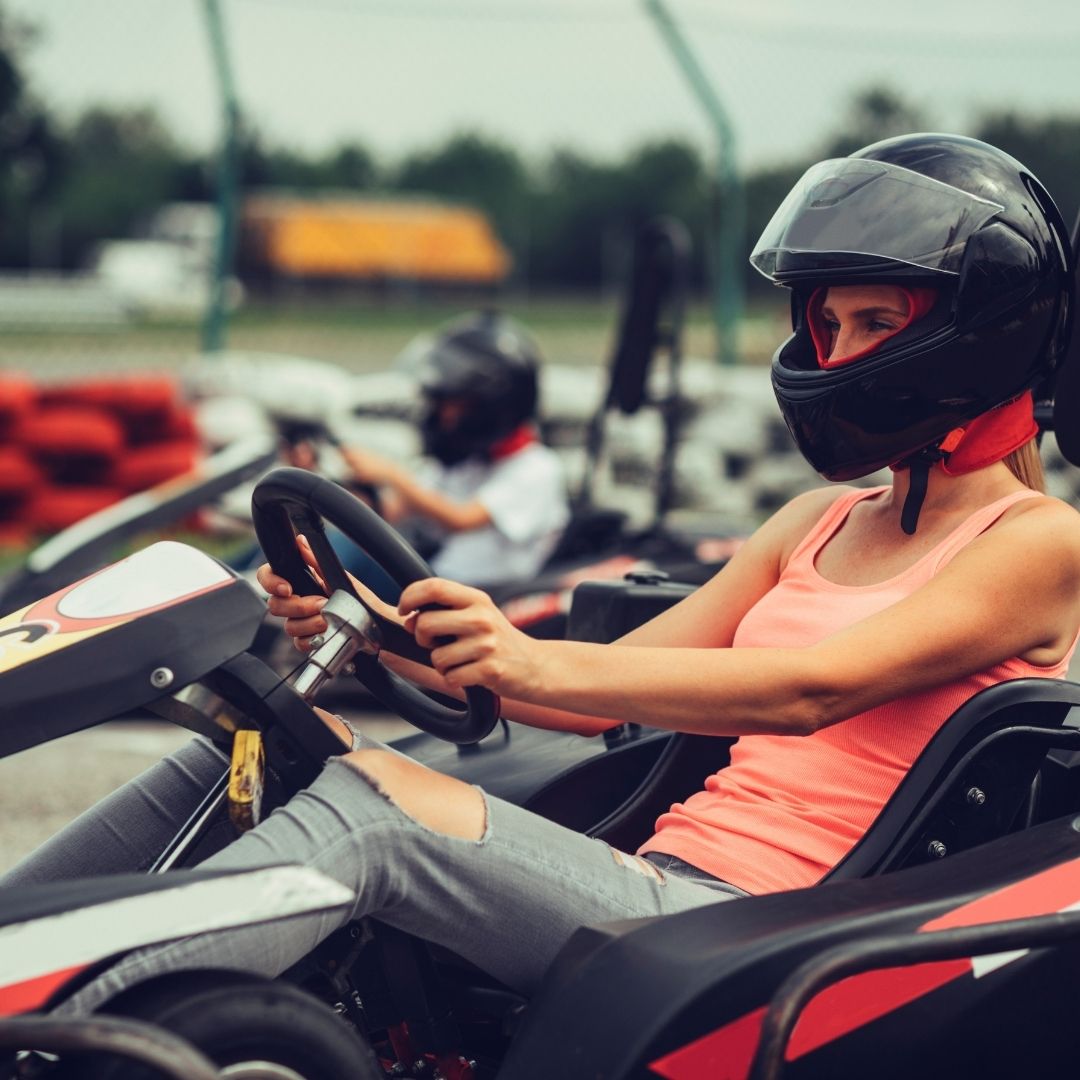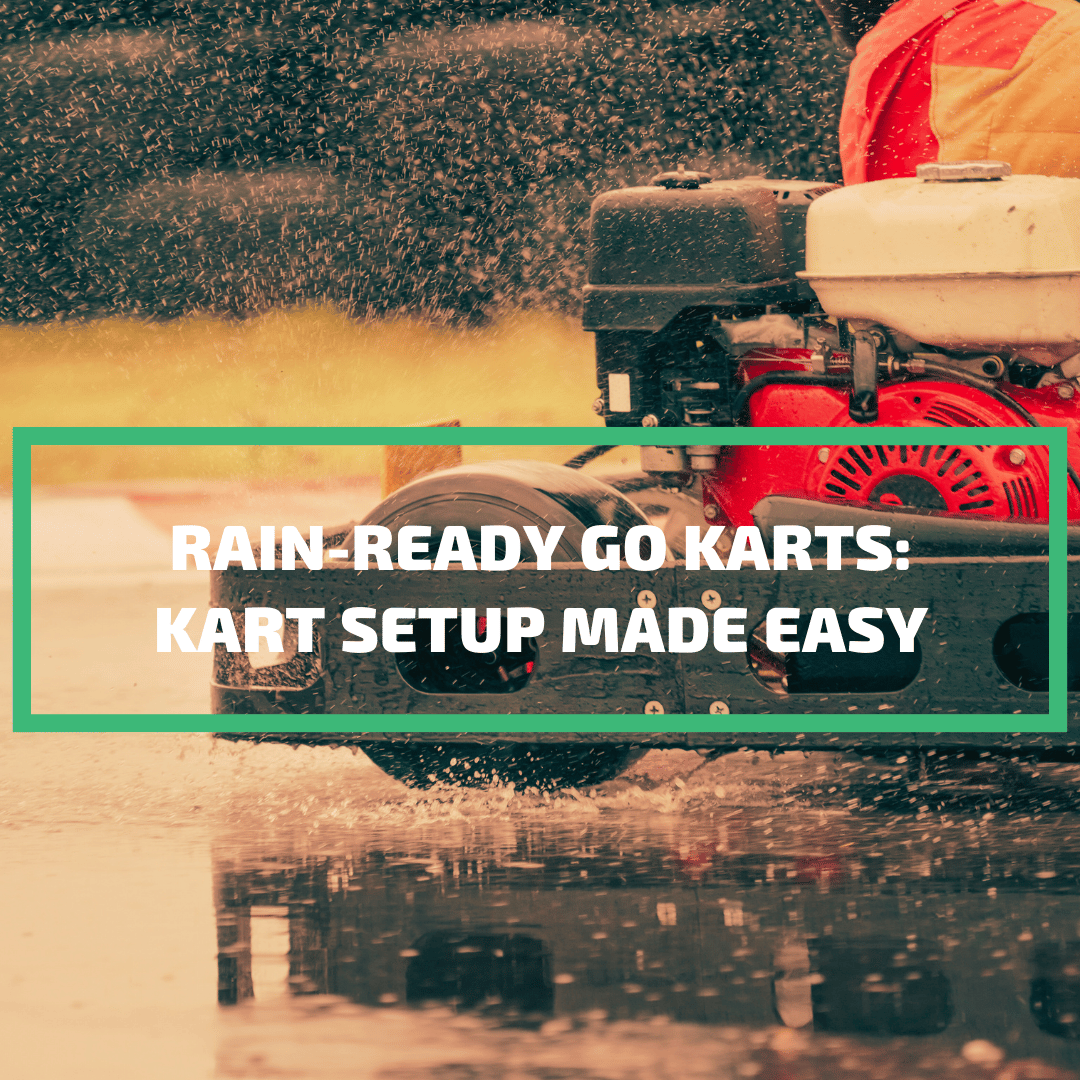Updated: 20.05.25
When it comes to wet weather go-kart racing, an optimised setup is essential for performance and control.
Picture yourself gliding through puddles, mastering corners, and maintaining grip on a rain-soaked track. That’s the power of a rain-ready go-kart setup.

This setup blends the science of go-karting with practical adjustments for wet conditions.
1. Why a Rain-Ready Setup Matters
Rain doesn’t have to halt the thrill of go-karting. The key is maintaining control, achieved through adjustments like balanced go-kart tyres.
2. Tyre Selection and Setup
Choosing the right tyres and adjusting pressure is critical for wet weather karting.
- Rain Tyres: Use rain tyres with deep grooves to channel water and prevent hydroplaning.
- Tyre Pressure: Lower pressure slightly to increase the contact patch for better grip.
These adjustments ensure maximum traction on slippery tracks. For more on tyre selection, explore our go-kart tyre guide.
| Setup Component | Adjustment | Purpose |
|---|---|---|
| Tyres | Switch to rain tyres | Improves traction and prevents hydroplaning |
| Front Wheels | Move outwards | Increases grip and stability |
| Rear Wheels | Square up | Enhances control on slippery tracks |
| Ride Height | Raise | Improves cornering grip |
| Weight Distribution | Adjust spacers and stub axles | Balances front and rear of the kart |
| Throttle Control | Gentle application | Prevents wheelspin |
| Braking | Gentle, controlled braking | Maintains control and prevents sliding |
3. Step-by-Step Wet Weather Adjustments
Optimise your go-kart for rain with these steps:
- Install Rain Tyres: Replace standard tyres with rain tyres, ensuring proper inflation.
- Widen Front Track: Add spacers to increase front track width for better stability.
- Align Rear Tyres: Square up rear tyres by adjusting axle width for enhanced control.
- Raise Ride Height: Adjust stub axle spacers to increase ground clearance.
- Balance Weight: Shift ballast to balance weight between front and rear.
- Fine-Tune Tyre Pressure: Slightly reduce pressure for improved traction.
These steps ensure your kart performs optimally in wet conditions.
Just as you wouldn’t hike in flip-flops, don’t race in rain without proper adjustments. Consider warming go-kart tyres for added performance.

4. Essential Tools for Setup
Having the right tools is crucial for wet weather adjustments. From spindle spacers to neoprene gloves, each plays a role. Learn more about tool functions in our guide on how go-karts work.

5. Chassis Adjustments
Chassis tweaks are vital for wet conditions:
- Front Track Width: Widen with spacers for better cornering stability.
- Rear Track Width: Square up rear tyres for control on slippery tracks.
6. Ride Height and Weight Distribution
Adjusting these elements enhances handling:
- Ride Height: Raise for increased ground clearance and cornering grip.
- Weight Distribution: Balance weight for stability by adjusting ballast.
7. Choosing the Best Rain Tyres
Rain tyres are your connection to the track. A spare set of wheels with rain tyres mounted is a smart strategy. Check our ultimate go-kart tyre guide for details.

8. Driving Techniques for Wet Conditions
Adapt your driving for rain:
- Smooth Steering: Avoid sudden movements to maintain control.
- Gentle Throttle: Apply gradually to prevent wheelspin.
- Controlled Braking: Brake gently to avoid sliding.
- Use Kerbs: Leverage kerbs for extra grip, like ridges on a trail.
9. Building a Beginner’s Go-Kart
Building a go-kart? Focus on rain-ready components to ensure versatility. Understanding part interactions is key for wet conditions.
10. Outdoor Go-Karting in the Rain
With the right setup and driving style, outdoor karting in the rain is exhilarating. Adjust your kart and embrace the challenge!
Frequently Asked Questions
How do rain tyres differ from regular go-kart tyres?
Rain tyres feature deeper grooves and specialised compounds to channel water and prevent hydroplaning, unlike slick tyres designed for dry tracks.
How can I protect my go-kart’s engine in wet weather?
Use water-resistant covers and sealants to shield the engine and electrical systems, ensuring functionality in rain.
Is wet weather go-karting suitable for beginners?
Yes, beginners can race in rain with proper training, equipment, and safety adherence, similar to learning any new skill.
What safety regulations apply to wet weather go-karting?
Regulations may include mandatory rain tyres, speed limits, and track-specific rules to ensure safety and fairness.
How can I save time setting up my go-kart for rain?
Keep a spare set of wheels with pre-mounted rain tyres and use quick-adjust tools like spindle spacers for faster setup.
Additional Resources
Explore more go-karting tips:
Contact Us
Questions about go-karts or kids’ ride-on toys? Visit RiiRoo.com and join our Live Chat for expert advice!





Share:
Are Ride On Toys Good For Toddlers?
Pro Tips to Master Go-Kart Cornering